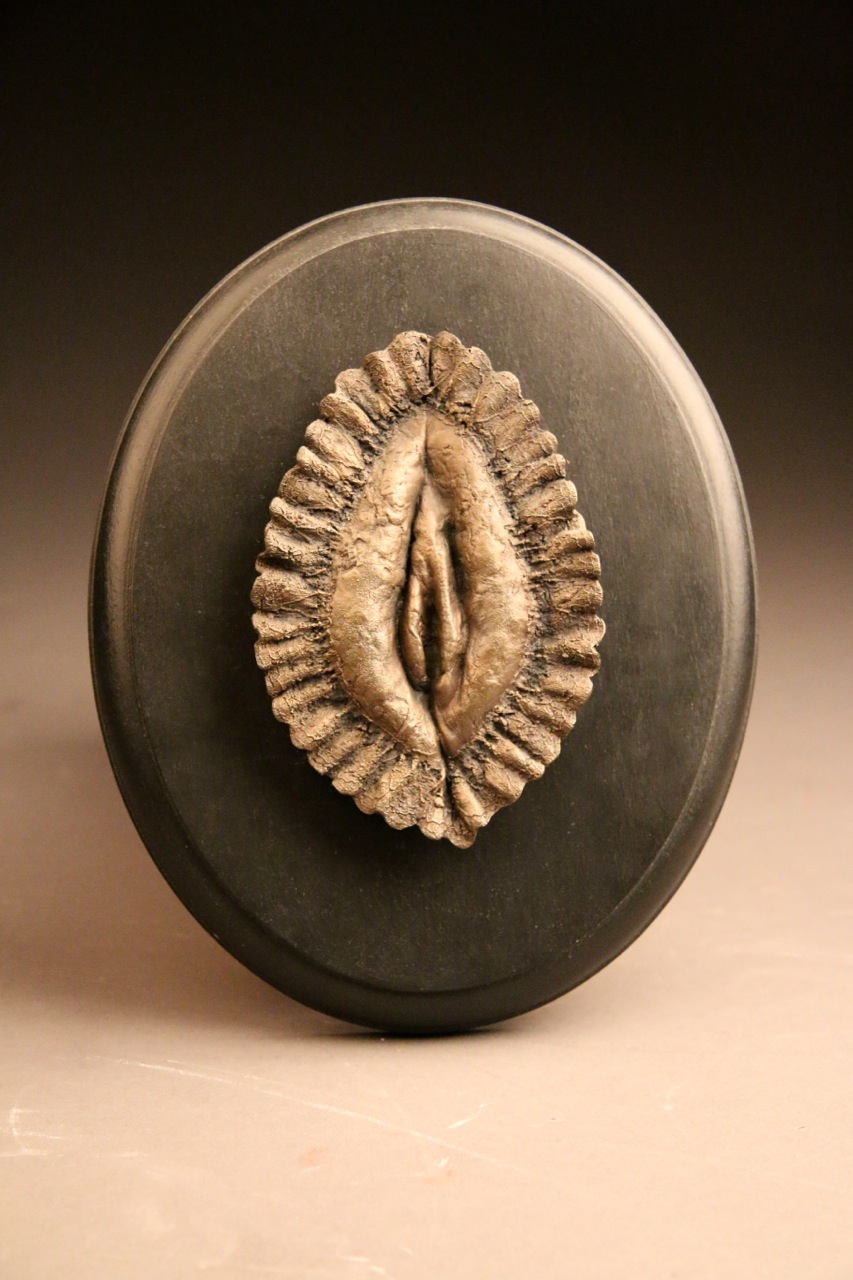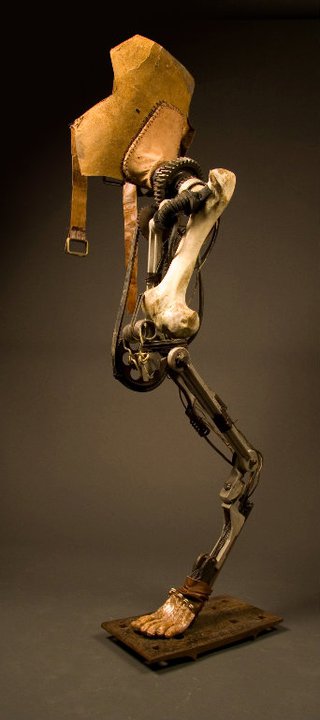Prologue:
The human body and its components allow us to understand facets of identity such as gender, sexuality, race, and ethnicity. Slight gestures can represent emotion, mood, and intent. Subtle and extreme alterations of the body, such as hair, skin, and clothing can suggest alignment with or rebellion against social conventions and to express ideas to others. Many artists explore visual expression through representations of the body and by using their own bodies in their creative process. The poetry of bringing objects together to suggest or make strong statements can sometimes be elusive. Not only does one need the right objects to build a dialogue, a keen observation of craft is important in developing a poetic voice that does not distract the artist intent.
Mission: (Project Description)
Create a sculptural form using elements from the human body and at minimum one other form. A cast component, plaster or other material, of the body will be a basis for their research. Other materials are not only encouraged but expected in the final solution. The project should meet the following criteria:
- Must use cast body element in final composition.
- Cast body element may be intentionally altered.
- Must use other materials (Mixed media).
- Develop a poetic intent.
- What is the work about?
- Develop an artist statement.
Challenge yourself and the project.
Project grades gain much from the thought and “Effort” put into them, not to mention pushing the envelope. Common references include hands and feet, this is the norm. Challenge this project by developing another component or area of the body.
This project should include a concept that incorporates the body or a component of the body along with other materials. The design and fabrication should be built in a manner that illustrates your concept, experimentation, craftsmanship, and a cohesive aesthetic.
Sketchbook Assignment:
Sketches of your ideas should be rendered before and during sculpting. A minimum of five pages should be dedicated to this sketching component. In addition, find a minimum of four sculptures or objects, referencing the body, that inspire you. Printed images of these sculptures or objects should be placed in your sketch book. Your sketch book will be graded along with your project.
Strategies and Techniques:
- Research: Contemporary and historical “Body art”, across cultures.
- Collect: Print and collect imagery and text for your research. (Place images in your sketchbook.)
- Brainstorm the possibilities. Make a list in your skeet book!
- With what body part will you develop your concept.
- Explore the idea of multiples.
- Sketch ideas in you Sketchbook. 5 pages of various ideas required.
- Mold Making: Mold material: Flexwax 120. Team effort. (3 per team works well)
- Casting: Plaster casting of your body component or cast in another material.
- Experiment: Plaster carving, cutting, fitting and affixing materials.
- Mining materials: Find materials and components to add to your castings.
- Other techniques: welding, wood, sewing and other fabrication methods should be considered
- Research and observe fabrication aesthetics and methods.
- Learn how things work and how connections are made.
- Dreaming, concocting, drawing developing: (Sketches)
- Experimentation, Experimentation, Experimentation
- Connections to the body: How do components attach, from the inside/on the outside?
- Making Sense: Make it believable.
- Finish: Less is more: Student should consider allowing the material to show off its austere-simple aesthetics. If paint is used, it should be used strategically to enhance the concept/aesthetic. KIS, Keep it simple.
Craft:
Functional Aesthetics: Goals: Engineering and concept, clean form, well crafted fabrication and technique, uniform aesthetic, a command over the material: Excellent Craftsmanship should be a major goal. Bad craftsmanship can weigh heavily on the success of a project. Focus on a refined form. Bad craftsmanship will easily distinguish A/B work to a C or below. Make your fabrication skills count, projects should not fall apart during critique or grading.
Tools and Materials:
• Sketchbook
• Plaster
• Scraping, carving tools
• Dust Mask/Particulate Respirator
• Safety Glasses
• Objects for pattern, Body
• Mold materials
• Wood (optional)
• Wood Shop
• Metal (optional)
• Adhesives, fastening devices
• Rubber or Latex gloves (optional)
• Welding Eye Protection
• Welding Gloves
• Angel Grinder
• Grinding disc
• Cut off disc
• Flap Disc
Create a label for your project with these specifics:
• Name:
• Dimensions: HWD
• Materials:
• Year Complete:
• Course:
Tape your label to your project. Use masking tape so that it will not harm your project.
Objectives:
- Method: Planning, Cutting Safely, Building techniques and strategies
- Material Characteristics:
- Three-Dimensional form using the human body
- Mold Making Process: Wax (Flex wax)
- Casting Plaster
- Fabrication techniques: Pre and Post Casting fabrication, Object Installation
- Structural and Aesthetic qualities
- Finishing Techniques
- Sensibility to form: Good design, clean aesthetics
- Integrity of the artist to their craft
Caution:
This process uses chemicals and materials that might be dangerous for some people. Read the MSDS (Material Safety Data Sheet) for questionable materials. Please use a respirator while using chemicals such as plaster. A dust mask may be used rather than a respirator. The respirator will provide better protection.
Artist Inspiration:
- Janine Antoni: “Lick and Lather”
- Mark Manders
- Marc Quin Blood Head
- Fabien Merelle
- Levi Van Veluw
- Kiki Smith
- Patricia Piccinini


